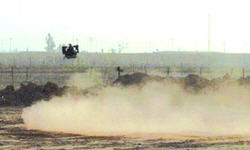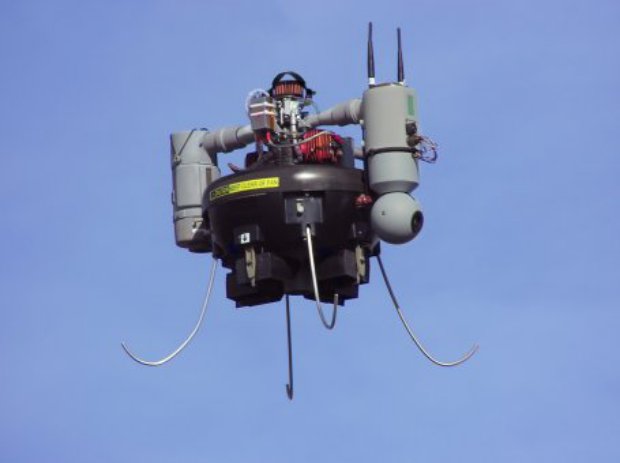The UK Army in Afghanistan operates a fleet of leased Hermes 450 aircraft, but the battery from 32 Regiment Royal Artillery, is also responsible for two other UAS that deliver full-motion video (FMV) from forward locations. These are the hand-launched Lockheed Martin Desert Hawk III (DH3), and T‑Hawk, Honeywell’s vertical-takeoff-and-landing UAV, which is part of the Royal Engineers’ Talisman route-clearance system.
Complementary to these are PGSS (Persistent Ground Surveillance System) aerostats, seven of which are deployed above bases in the British area of operations. These are operated and maintained by contractors, with support from 5 Regt. Royal Artillery liaison officers. The PGSS payload contains electro-optical and infrared sensors, which feed data into the Cortez network, permitting drag-and-drop viewing of multiple intelligence, surveillance, target acquisition and reconnaissance (Istar) sources for a location.
“The good thing about [Cortez] is it enables our cross-cueing piece,” says Capt. Alex Gray, operations officer of the UAV battery. “It could be that a base Istar asset picks something up then cross-cues a Hermes 450 onto it. It’s a useful and powerful tool.” Cross-cueing of layered assets generates detailed intelligence, showing information such as route obstructions and the type and size of structures, doors and windows.
DH3 also feeds FMV into Cortez. Eight of the battery’s 12 DH3 detachments are at bases across Helmand. Two more are on hand as a surge capability and to back-fill during deployment changeovers, while two others are mobile—one with the Brigade Reconnaissance Force, the other with the Warthog group. “The key with DH3 is it’s quick into action,” says Gray. “It can get into the air in 5-8 min., and we’ve flown almost 2,000 flights on Herrick 14,” the U.K.’s Afghanistan deployment, which began in April.
The aircraft is programmed to return to a given position using GPS. It flies a U‑shaped profile on its way in, enabling it to assess local wind conditions and minimize impact on landing. The modular airframe disperses impact forces by breaking apart. The new assisted trim landing (ATL) system gives greater control to the user during recovery, including the ability to manually flare for a gentler touchdown. The system was fielded in July. “With [ATL], we can use the Xbox 360 control pad, which is usually used to control camera movement, and land the UAV,” says Sgt. Matthew Trigg, a DH3 operator. “We’re getting a lot of good reports [from the detachments] and the attrition rate has started to go down.”
Improvements to the T-Hawk are restricted to operational concepts rather than hardware, but the results are impressive. The controversial platform had seemed something of an afterthought in Talisman, but transferring control from the Royal Engineers to 32 Regt. helped it find a niche. “We overtook the amount of flights the engineers had done in our first month here flying it,” says Chris Darker, a bombardier and member of 32 Regt.’s two-man T-Hawk crews now embedded within Talisman squadrons. “The guys flying it had other jobs within the squadron—they could have been a Talon operator or a searcher—and were doing T-Hawk as a secondary job. But the more we use it, the more they want to use it. They’re adamant now that they want to bring two systems with them every time they’re out.”
 Two of the aircraft’s perceived disadvantages—noise and the airflow generated in hover—are now considered pluses. When flown near the ground, it can be used to blow dust away from possible improvised explosive devices to aid visual checks, and the noise has a potent deterrent effect.
Two of the aircraft’s perceived disadvantages—noise and the airflow generated in hover—are now considered pluses. When flown near the ground, it can be used to blow dust away from possible improvised explosive devices to aid visual checks, and the noise has a potent deterrent effect.
The platform’s FMV is considered superior to that provided by DH3, and its utility for Talisman’s route-proving task is undoubted. Darker, who has used Hermes, DH3 and T-Hawk, says: “I’ve probably enjoyed flying [T-Hawk] the most. I flew this 14 times on one op where we cleared a route in [the Nahr-e-Saraj district, Helmand Province], and that route is still being used.”
Source: Aviation Week

